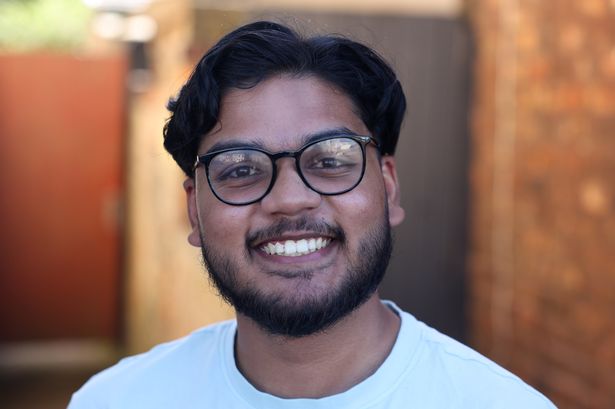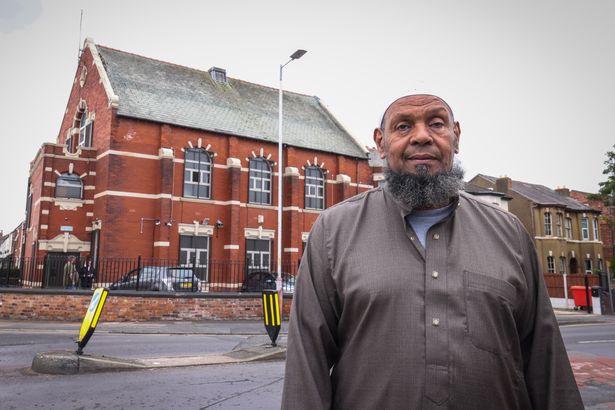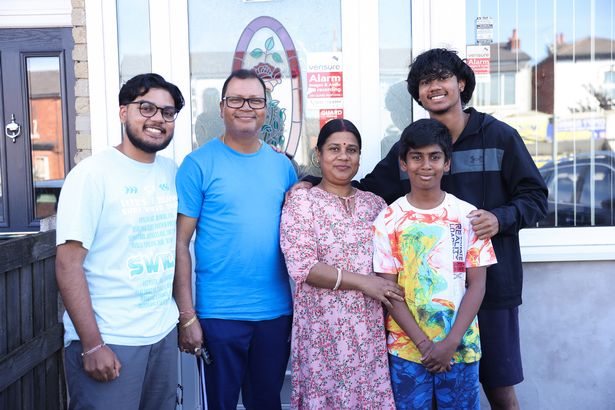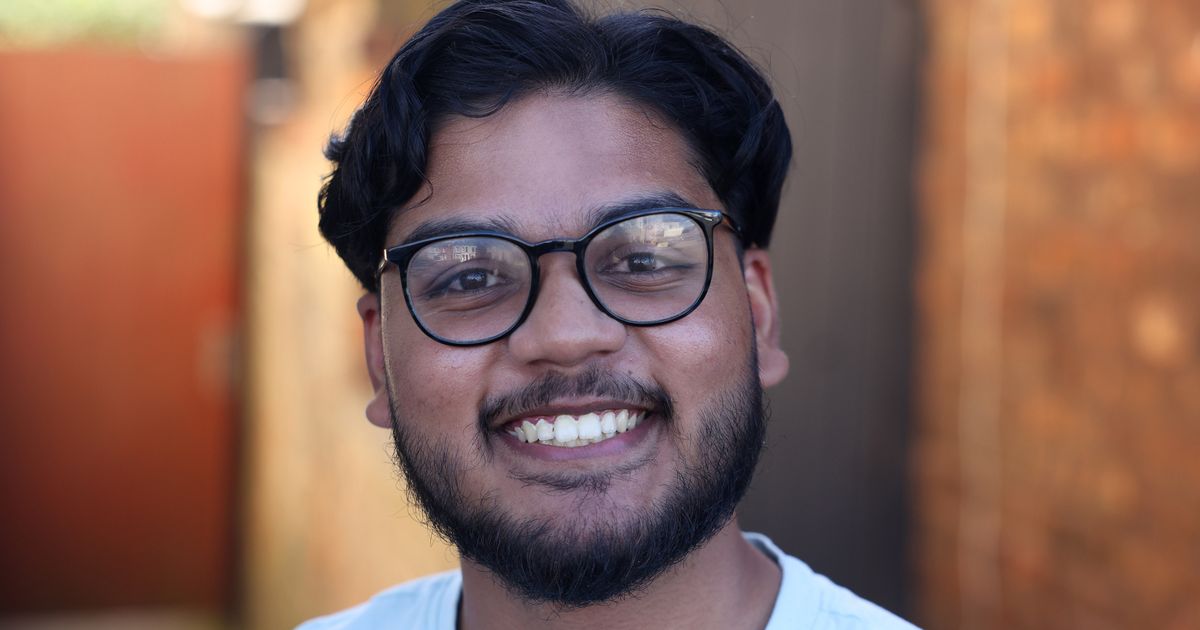Dozens feared for their safety as they felt trapped in their homes Raj Malakar, resident of Sussex Road in Southport(Image: Liverpool Echo)
Raj Malakar, resident of Sussex Road in Southport(Image: Liverpool Echo)
“It was claustrophobic; it genuinely seemed like we were surrounded. We went into the kitchen because that was the furthest part of the house from the road,” Raj Malakar recalled, standing on his driveway just a few yards from where rioters had gathered to attack Southport Mosque.
The 20-year-old University of Liverpool student spoke to the ECHO alongside his parents and two younger brothers, as Southport prepared to mark one year since the horrific riots that shook the town on the night of July 30, 2024.
That night followed the unthinkable attack on a Taylor Swift–themed workshop on Hart Street, only minutes from Southport Mosque. Soon after a moving vigil in the town centre, violent thugs stormed the corner of Sussex Road and St. Luke’s Road.
People of all ages encircled the mosque, a modest building tucked onto the corner of a junction. Bricks and other missiles were hurled at its windows while a small group of police officers attempted to contain the growing unrest.
Before authorities could gain control, dozens of rioters had turned into hundreds. Onlookers and agitators alike flooded the streets, surrounding the mosque, as Imam Ibrahim Hussein watched from the top floor – trapped, terrified, and fearing the building might be breached at any moment.
 Imam of the Southport Mosque, Ibrahim Hussein(Image: Liverpool Echo)
Imam of the Southport Mosque, Ibrahim Hussein(Image: Liverpool Echo)
The violence only intensified as the night wore on. Before dusk, a police van was set ablaze, and by nightfall, bin fires were ignited along the roads in an effort to stop officers from pushing rioters back.
As chaos unfolded, word spread that Jenni Stancombe, mum of Elsie Dot Stancombe, had taken to social media with a desperate plea. She wrote: “This is the only thing that I will write, but please stop the violence in Southport tonight.”
Despite her words, many continued to claim the unrest was being carried out in memory of Bebe King, Alice da Silva Aguiar, and Elsie – an assertion publicly condemned by the families of the three girls.
It was not until after midnight that the crowds finally began to disperse, leaving behind a sense that the thugs who had torn the town apart had simply grown bored of their own chaos.
Meanwhile, just up the road, Raj and his family stayed huddled in their kitchen, too frightened even to look outside, fearing they might be targeted solely because of the colour of their skin.
 Riot police hold back protesters after a police van goes up in flames(Image: Getty Images)
Riot police hold back protesters after a police van goes up in flames(Image: Getty Images)
Raj said: “We didn’t want to take any risks, so we closed all the blinds; all the lights were off. It was so scary; all my friends were messaging me because they were watching the news.
“It was claustrophobic; it genuinely seemed like we were surrounded. We went into the kitchen because that was the furthest part of the house from the road. We did not want to risk being seen. At one point we went into the garden for a second, and after the police van was on fire, it just cemented the fact that we could not be seen that night.
“They would have assumed we are Muslim and we’re part of the mosque. People were pulling bricks from our wall and throwing them at the police.
“It was genuinely one of the most fear-inducing moments I have ever been in. I just thought, ‘I cannot believe this is happening on my doorstep’.”
Across the road from the mosque, Andrew Cahill and Beverley Dixon also felt trapped inside their home, which sits on the corner of Sussex Road and St. Luke’s Road. From their windows, they were forced to watch as rioters cut through their garden, some picking up their outdoor furniture to hurl at police officers armed only with riot shields.
Beverley said: “It’s almost like it wasn’t real looking back on it. We were inside looking out the window, and it was just horrific. It was like something you see on the television. We didn’t know what was going on at first.
“It was awful watching the first lot of police turn up because they didn’t have any protection whatsoever; they were bombarded. Until the riot police came, it was horrendous.
Andrew added: “There was nothing that we could do. Bev went out because they were using our wall to go to the toilet. They weren’t nasty to us. They just stood on our walls taking videos of what was going on.
 Andrew Cahill and Beverley Dixon in their front garden on the corner of St Luke’s Road and Sussex Road in Southport(Image: Liverpool Echo)
Andrew Cahill and Beverley Dixon in their front garden on the corner of St Luke’s Road and Sussex Road in Southport(Image: Liverpool Echo)
“Others nicked all our chairs and threw them at the police. They took anything they could get their hands on to either set on fire or throw. About halfway down [St Luke’s Road], they took all the bins from the houses and set them on fire. When they set fire to the van, it was horrific.
“They were just animals. All they wanted to do was smash those windows in and torch the place. Torch it. They started a fire at the side of the building and were throwing stuff all the time. Poor Ibrahim was in there.”
That night, more than 50 police officers were injured while doing their job and protecting the community. Just a day earlier, some of those same officers had been among the first responders to the devastating attack on Hart Street.
Whitney Abbot, who was inside her home on Sussex Road with her husband and 11-year-old daughter, said she couldn’t believe how quickly the violence escalated. She said: “When they started to arrive, we thought they had all come from the vigil, and they were walking past to pay their respects at Hart Street. But then they didn’t cross the junction. It all just happened so quick.
“They were in the garden taking all the bricks off the wall and took screen wash and threw it all at the police. They were using our stuff to throw at them. I was fuming.”
 Bricks still missing from the wall of a property(Image: Liverpool Echo)
Bricks still missing from the wall of a property(Image: Liverpool Echo)
“If everyone who was mortified in our homes had gone out, I think there would have been more of us than them. What they were shouting had nothing to do with those girls. It’s just awful.”
Whitney told the ECHO how she welcomed bloodied officers into her home that night. She said: “The police were amazing; they were coming in to use my toilet just covered in blood. It was awful. We still get a fright when a police car goes past.”
Within six hours of the riots coming to an end, it was the local community who took charge of the recovery. People took the morning off work to clear the rubble, pulling melted plastic from the tarmac, rebuilding damaged walls, and making sure their neighbours were safe.
One year later, scars of that night still remain. Speaking to the ECHO from her front garden, Whitney pointed out the missing bricks in her wall – damage mirrored across several homes in the area.
Local builders stepped in where they could on July 31, with the majority of the wall outside the mosque rebuilt the very next day, along with other damaged walls nearby.
 The clean up after the Southport riots(Image: Colin Lane/Liverpool Echo)
The clean up after the Southport riots(Image: Colin Lane/Liverpool Echo)
But in the weeks that followed, Raj and his family continued to feel the impact of that harrowing night.
Raj, who was 19 at the time of the riots, said: “As a result of what happened, I have taught my siblings to be almost docile in public relationships just in case there is some form of underlying discrimination. I want them to be wary of it because when they go out into the world, they’re talking to people; they don’t know what they might say.
“We definitely have a heightened sense of caution now.”
He continued: “For a good couple of weeks I was scared to go out because I didn’t know what people were going to be like; I didn’t know what was going to happen. I see videos on my phone, and thankfully I feel a lot better now because people are more aware of the innate discrimination that was happening.
“But at the same time, especially when I’m alone, I’m always keeping an eye out because I could always be a target for whatever silly reason they come up with.”
Imam Ibrahim Hussein echoed the ongoing fears within the community. He said: “There is still a lot of anxiety. People should be safe and comfortable in their community. People were born in Southport, grew up in Southport, and work in Southport, so why should they suddenly feel as though they have to make a provision for something that has nothing to do with us?
“We love this community; they have been our neighbours for 30 years. They are decent people; you have seen how they reacted and stood next to us with flowers, messages, and help. We have nothing against this community at all; we are very happy with them, and I am hoping they are happy with us.”
 Raj Malakar, left, with his family(Image: Liverpool Echo)
Raj Malakar, left, with his family(Image: Liverpool Echo)
Since the riots, the mosque has introduced 24-hour security, upgraded its CCTV system, installed a steel door at the main entrance, and fitted new metal grills across every window.
Ibrahim said: “We don’t know what the future holds. We are here to stay; obviously, we are not causing any problems, we are not upsetting anybody, and if our presence upsets some people, there is nothing we can do about it.
“We are not vocal; we do not go round demanding anything from people. We are just a community, a hard-working community who looks after their families, and this is why it was devastating when the murders took place because family means everything to Muslims.”
While convictions have been brought and offenders jailed, the wounds left by that night remain far from healed.
The people of Southport – and indeed the country – stood together in defiance of the violence, but unease lingers. As Ibrahim explained, the community continues to feel anxious, always wary of what might lie ahead.
